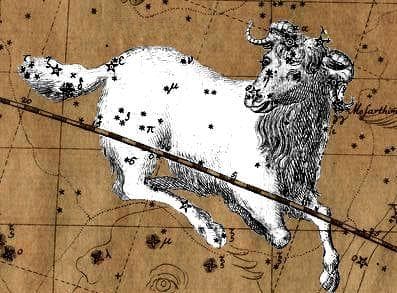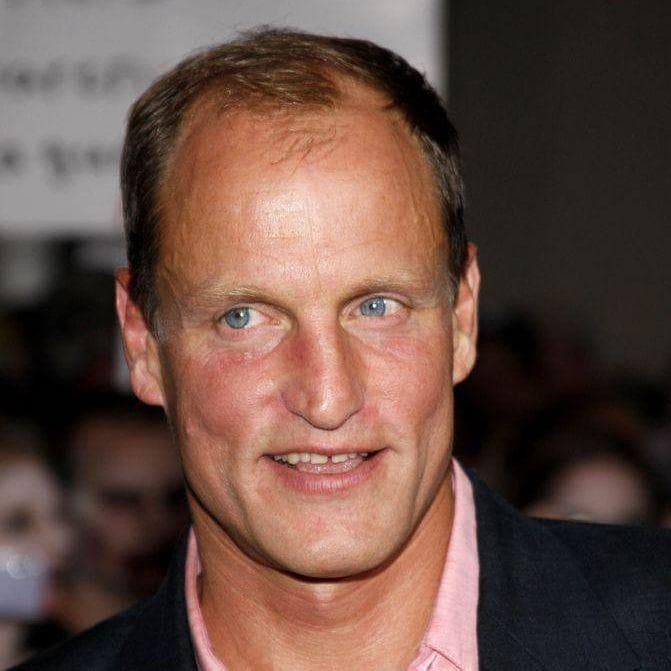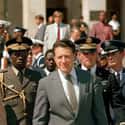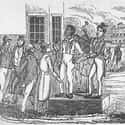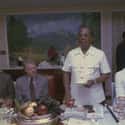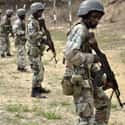-
(#1) The Execution Was Broadcast Live On Television
The video of the broadcast depicts the kangaroo trial and sentencing of the cabinet, followed by their full execution. While not outwardly gory or gruesome, the footage holds on the condemned men before, during, and after the shower of bullets, presenting a distressing – and what some may consider extremely disturbing – image.
Prior to the executions, Master Sgt. Samuel K. Doe gave a public, televised press conference. Doe told reporters, "The revolution which brought down the Tolbert government was motivated by the sufferings of the Liberian people throughout our country. Things were fixed in such a way that only a very few people enjoyed everything."
-

(#2) The Condemned Were Paraded Around Naked Before Their Execution
Thirteen cabinet members were rounded up when Master Sgt. Samuel K. Doe led his rebellion against President Tolbert. An additional 27 members of the government were also slain, but 14 cabinet members were put on trial. These trials, however, were simply five-man military tribunals led by the rebels, and all but one of the cabinet members were quickly sentenced to execution by gunfire. The former information minister, Johnny McClain, escaped execution because he was an indigenous Liberian rather than an Americo-Liberian.
Prior to their slaying, some of the condemned men were forced to walk either naked or partially clothed to the beach where they were then shot.
-
(#3) A New, Similar Regime Was Established Soon After The Executions
After storming the palace and disposing of most governmental leaders, Samuel K. Doe (pictured left) founded a new government called the People's Redemption Council (PRC). Before the rebellion, Doe was virtually unknown by the Liberian public. He was a low-ranking officer with no political training. Once in office, he grew paranoid and favored indigenous Liberians like himself, flipping the scales but essentially keeping Liberian classism alive.
-

(#4) A Crowd Gathered To Watch The Shootings
Despite the brutal cruelty of the public executions, many Liberians gathered to watch the display and welcome the regime change.
The previous year, President Tolbert proposed an increase in the price of rice, a suggestion that outraged the Liberian people; a peaceful protest was planned, but 2,000 participants grew to 10,000, resulting in rampant riots and looting that caused more than $35 million in damages. The event was dubbed the "Rice Riots," and they marked the beginning of the end for Tolbert.
-
(#5) The Republic Of Liberia Was Formed To House Former Slaves
In the early 1800s, Quakers and slaveholders in America formed the American Colonization Society (ACS), a strange pairing as Quakers were staunchly against the rampant slave trade in the US at the time. Despite this, the two groups shared a common goal: they both wanted to find somewhere for freed slaves to live. The Quakers wanted them to have their own space, and the slaveholders wanted them far away in case they ever considered rebelling.
Over the next 60 years, tens of thousands of former slaves and freeborn black Americans were sent to the settlement of Monrovia (named for U.S. President James Monroe) where the population grew as they combined with the indigenous Africans already living in the area. In 1847, they declared themselves an independent state: the Republic of Liberia.
-

(#6) Liberia's Oligarchy Led To Its Civil Unrest
Once the people of the Republic of Liberia began governing independently in the 1840s, a two-tiered society rapidly emerged. The upper class was comprised of those who came from America or their descendants, called the Americo-Liberians. These Americo-Liberians were highly Westernized, creating a marked contrasted between themselves and the indigenous African people who also lived in the newly formed country. The Americo-Liberians instituted Christian religious practices and founded schools. Soon, a general understanding emerged that certain Liberians were "whiter" – and thus, based on the white Western ideal of the time – better than others.
-
(#7) Samuel K. Doe Slaughtered Liberia's President One Month Prior To The 1980 Coup
In Monrovia on April 12, 1980, 28-year-old Samuel K. Doe and 17 other military officers and soldiers stormed President William R. Tolbert's palace and slayed him there. Tolbert was an Americo-Liberian and a member of the only party to have any significant political influence, the True Whig Party. His body was thrown into a mass grave with 27 other coup victims.
His assassination effectively ended 133 years of Americo-Liberian rule.
-

(#8) Doe – The Coup D'état's Leader – Was Eventually Executed In Another Coup
Ironically, Samuel K. Doe, the man who stormed the presidential palace and immolated President William R. Tolbert, Jr., was himself overthrown by rebels years later.
On September 9, 1990, only 10 years after overthrowing the Liberian government and nine months into the first Liberian civil war, Doe was captured by the Independent National Patriotic Front of Liberia (INPFL), led by Prince Johnson. He was stripped, interrogated, and tortured on camera, and within a few hours, he had perished.
-
(#9) Two Separate Years-Long Liberian Conflicts Resulted In Over 250,000 Casualties
Though the video depicting Liberian government officials being executed on a public beach is truly disturbing, the following decades of Liberia's history provided even more distressing imagery. Two civil crusades were launched in Liberia, the first of which brought down Samuel K. Doe in 1989 – the man responsible for the executions of the Liberian cabinet – and lasted 13 years. The second was initiated in 1999 by the Liberians United for Reconciliation and Democracy (LURD) and only ended in 2003 when President Charles Taylor resigned.
-
(#10) Liberia's 22nd President Was Sentenced To 50 Years In Prison
The man who eventually overthrew Samuel Doe began as one of his friends and allies. Charles Taylor worked for Samuel Doe after graduating from college in America. He was sent to jail in America for embezzlement but escaped and returned to Liberia to lead the rebellion that would take down Doe. From there, he shaped Liberia into a guerilla terrorist country.
Later, in 2012, he was the first person since the Nuremberg trials to be convicted of crimes against humanity and war crimes. He was guilty of rape, slavery, and the use of child soldiers, among other horrors. He had captured diamond mines, invaded towns, and committed mass atrocities in Sierra Leone in the '90s, some of which included mutilating thousands of civilians, drugging children, and slaughtering an estimated 50,000 people.
New Random Displays Display All By Ranking
About This Tool
In December 1821, the abolitionist movement began in the United States, and a large number of blacks were sent back to Africa. Providence Island was the place where the first black American immigrants landed in the early 19th century. It was named Liberia in 1824, which means the city of freedom. However, disputes between the natives of Liberia and American immigrants have continued. Despite the same skin color, they have continued racial discrimination and class divide.
Black Americans have always monopolized politics and wealth. Finally, the Liberian Civil War broke out in 1980, and the whole of Liberia was caught in war again. Many people watched a video of Liberian officials getting executed. The random tool introduced 10 facts about Liberia's extreme and riotous history.
Our data comes from Ranker, If you want to participate in the ranking of items displayed on this page, please click here.

